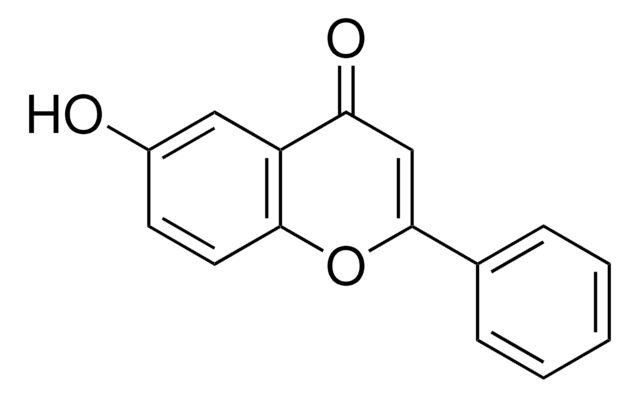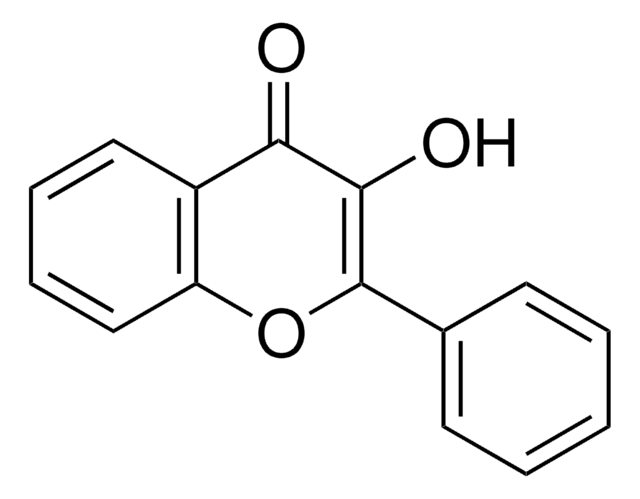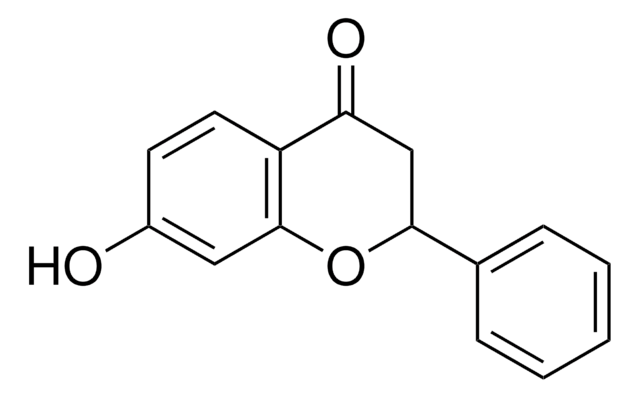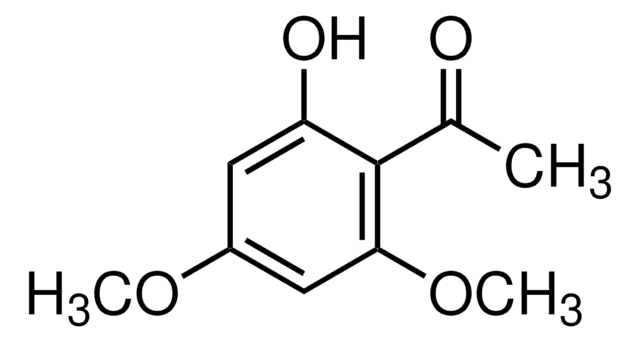H4405
5-Hydroxyflavone
≥97%
Synonym(s):
5-Hydroxy-2-phenylchromone, NSC 26745, Primuletin
About This Item
Recommended Products
assay
≥97%
SMILES string
Oc1cccc2OC(=CC(=O)c12)c3ccccc3
InChI
1S/C15H10O3/c16-11-7-4-8-13-15(11)12(17)9-14(18-13)10-5-2-1-3-6-10/h1-9,16H
InChI key
IYBLVRRCNVHZQJ-UHFFFAOYSA-N
Gene Information
rat ... Gabra2(29706)
Application
- Condensation reactions for synthesis of copper(II) complexes as bioactive molecules to combat antioxidants
- Thermal behavior studies of vanadyl complexes with flavone derivatives in terms of insulin-mimetic agents
- O-methylation with di-Me carbonate
- DFT studies on excited-state intramolecular proton transfer
Storage Class
11 - Combustible Solids
wgk_germany
WGK 3
flash_point_f
Not applicable
flash_point_c
Not applicable
ppe
Eyeshields, Gloves, type N95 (US)
Certificates of Analysis (COA)
Search for Certificates of Analysis (COA) by entering the products Lot/Batch Number. Lot and Batch Numbers can be found on a product’s label following the words ‘Lot’ or ‘Batch’.
Already Own This Product?
Find documentation for the products that you have recently purchased in the Document Library.
Customers Also Viewed
Our team of scientists has experience in all areas of research including Life Science, Material Science, Chemical Synthesis, Chromatography, Analytical and many others.
Contact Technical Service












